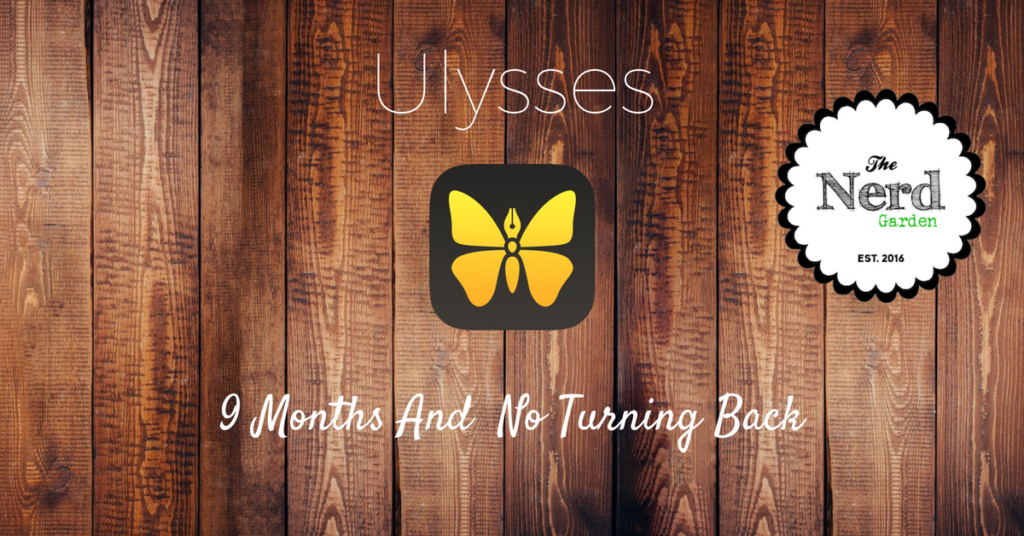
This past winter, I blogged about some of the challenges I experienced after upgrading my Mac to El Capitan. One of the biggest were problems that arose with my go-to writing app (at the time), Scrivener. Before I jump into that, let me bring you up to speed on my former Scrivener devotion and how it went South–fast.
I bought my first Mac in 2011 _because_ of Scrivener. I’d wanted a software application specifically designed for writers. One that would support fiction manuscripts. From the moment I began working with it, I fell in love. For the first time, I could move chapters around minus the hassles associated with Microsoft Word, attach links and images to my projects for reference. Scrivener was life-changing.
Sure it was complex, but I’d spent twelve years as a technical writer, creating training materials for new software applications. If anyone was going to figure out Scrivener it would be me. Five years of dedicated use followed, after which I realized I wasn’t any closer to knowing how to use all of the features in Scrivener than I’d been on day one.
Intro El Capitan. One upgrade and I couldn’t open my files. Imagine that. You open up your latest work in progress only to discover you can’t access the 1500 words you wrote the day before. I’m pretty darn resourceful, but when I couldn’t solve it, I reached out to Scrivener. I discovered quickly that my five years of dedicated use mattered little. I got hit with lackluster customer service and a 48 hour response window. That experience, combined with Scrivener’s constant delays in releasing their iPad app, drove me to another solution.
Ulysses. For some, Ulysses may seem daunting. After all, it incorporates hypertext markup language, so you’ll find yourself adding a bevy of hashtags and asterisks to your text. It also doesn’t have the traditional file management structure associated with apps like Scrivener. Instead, it updates to your iCloud drive and you never really see your files. A bit scary? Kind of.
So How Is It Going?
At the time I’m writing this, I’m about nine months into using Ulysses, and I can’t see myself going back to Scrivener. I’ve a got a Cliff Notes version below, but for a demo and the full story check out this video. [UPDATE]: Based on some valuable viewer feedback we identified a problem with the previous video’s resolution. We’ve updated the same version at a higher res, but with additional content. Enjoy!
What I Love…
- It truly is distraction-free writing.
- The sync works flawlessly–every time.
- Ulysses keywords are changing the the way I manage plot progression.
- Markup Language is my new timesaver.
What I Would change…
- It’s lacking a daily word count feature.
- The quick export formats aren’t easily modified.
So that’s it. What I like. What I don’t. Scrivener has since come out with their iPad app and I considered trying it for about a minute and a half. See, every user is different and there’s no right or wrong software choice. If you’re really into having every possible feature at your fingertips, Scrivener might be the choice for you.
But for me? I prefer to focus on the words. That’s all I’ve ever cared about, anyway.
Want to read about the catalyst for the change? Read my original post here.

4 thoughts on “Ulysses: Nine Months and No Turning Back”
Trying to decide between Ulysses and Scrivener. The main appeal for me that I can see for Scrivener is the area to dump research materials, like pdfs, images, scraps of information, etc. Do you miss that kind of feature in Ulysses?
Hi John,
Thanks for stopping by! Great question. No, I don’t miss Scrivener for that reason. I’m not a huge fan of Scrivener’s set up in this area. Project References, for example, is an option where you can pull in hyperlinks, but that’s all it is—a link to a webpage. You can import webpages in, but then it shows up in a totally different location in the project. Finally, if I want to save a resource, I’d prefer to save it and get back to the work. Instead, I found myself having to remember how to get to my notes. 🙂 Before I switched, I started using the free version of Evernote, with the Evernote Clipper for Chrome. Then I tagged the clips by project. I’ve continued that approach and it’s worked tremendously well. I do, however, miss the word count tracking on Scrivener. The ability to see how much you’ve written against a goal is sweet! Good luck on your decision. Before you commit to one or the other, definitely check out a free trial. Scrivener’s is for 30 days. Ulysses had one that was 8 hours of use I believe (couldn’t find that on their website so double check), but that is 8 hours total not consecutive hours. So you could use it a little here and there for a few weeks and see if it works for you. Let us know what tool you choose. Either way, they’re both champs. 🙂
Thanks for the reply! Ulysses just put on a 25% off sale for being nominated as part of a Best of 2016 in the Mac App store so that made my decision a little easier. Ulysses for the win.
You’re welcome. That’s awesome! Even better that it was on sale. I hope you enjoy working with it as much as I do. If you have any questions about it or there are some pain points you experience with it, ping us at nerd@thenerdgarden.com and let us know. We are always looking for new ideas for videos.
Comments are closed.